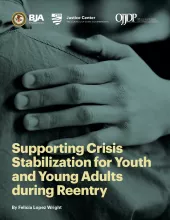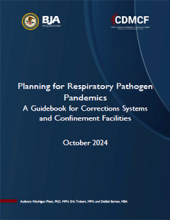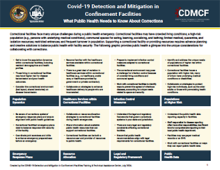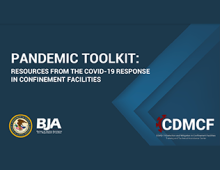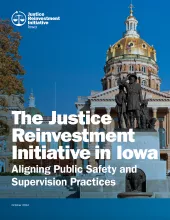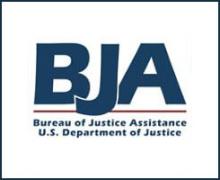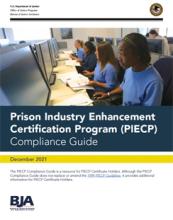Correctional facilities
Impact Justice: Changing the Conversation, and Reality, Around Homelessness
Supporting Crisis Stabilization for Youth and Young Adults during Reentry
Planning for Respiratory Pathogen Pandemics: A Guidebook for Corrections Systems and Confinement Facilities
What Public Health Needs to Know About Corrections / What Corrections Need to Know About Public Health
What Emergency Management Needs to Know about Corrections / What Corrections Needs to Know about Emergency Management
Pandemic Toolkit: Resources from the COVID-19 Response in Confinement Facilities
The Justice Reinvestment Initiative in Iowa: Aligning Public Safety and Supervision Practices
Navigating Complex Relationships: Support Networks Among Women in Community Corrections
Interdiction Technologies and Strategies for Contraband Cell Phones
Prison Industry Enhancement Certification Program (PIECP) Compliance Guide
HIV Prevention and the Treatment Needs of Offenders at risk for or Living with HIV/AIDS
Overdose Risk Reduction and Relapse Prevention for RSAT Programs
Helping People Released from Prison and Jails Find Housing: A State by State Resource Guide
Funding Available to Address the Use of Contraband Cellphones in Correctional Facilities
FY 2021 Safeguarding Correctional Facilities and Public Safety by Addressing Contraband Cellphones
See the YouTube Terms of Service and Google Privacy Policy
Funding Opportunities for Your Community in 2021: An Overview of What’s Ahead
See the YouTube Terms of Service and Google Privacy Policy
Funding Available: Safeguarding Correctional Facilities and Public Safety by Addressing Contraband Cellphones Program
Tribal Justice Systems Infrastructure Program (TJSIP)
This program provides federally recognized tribes and tribal consortia with funding to strengthen tribal justice system capacity by addressing physical infrastructure needs.



